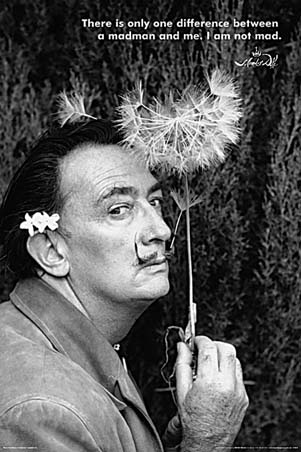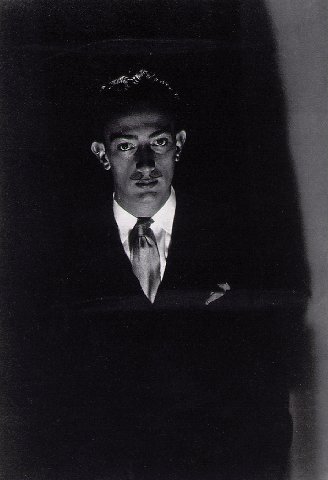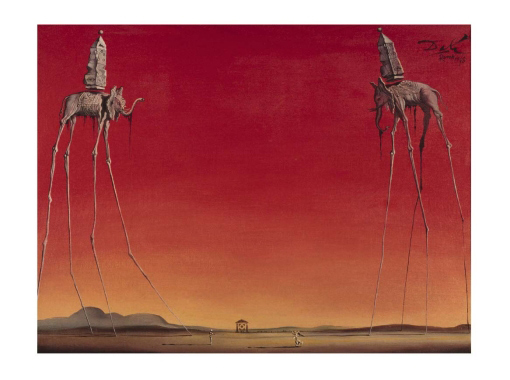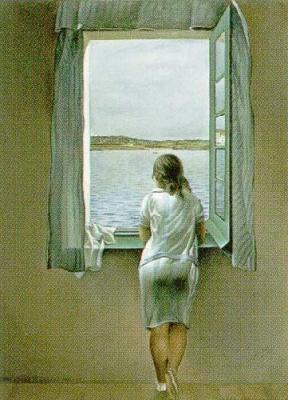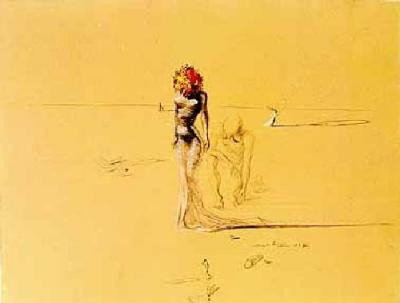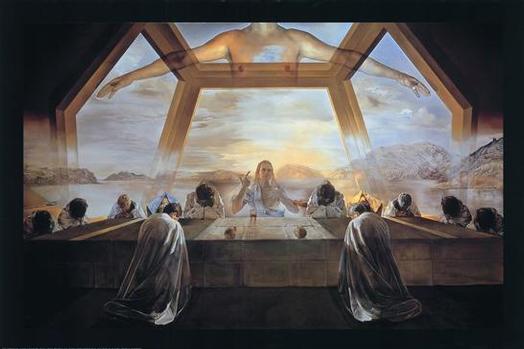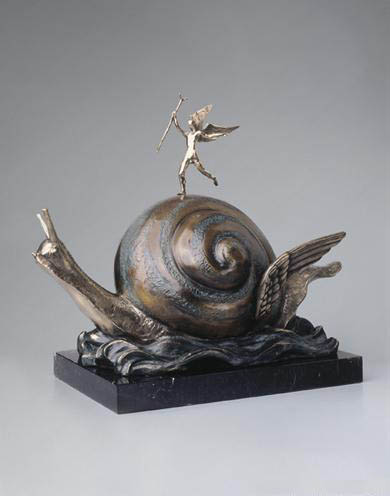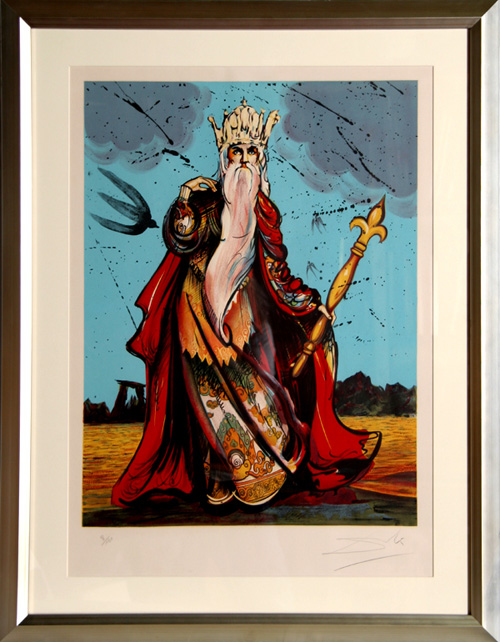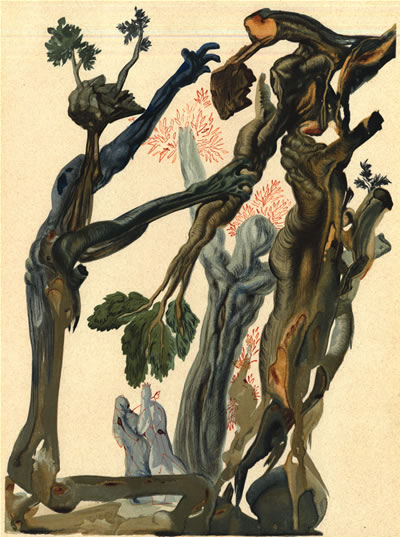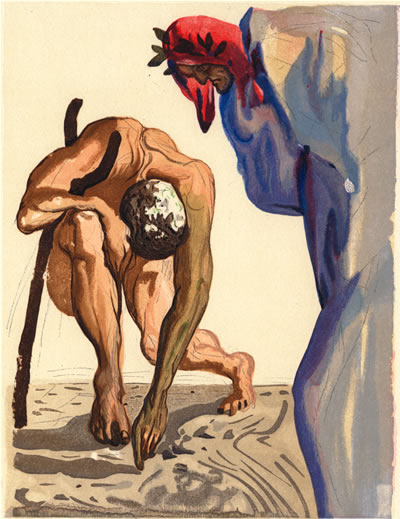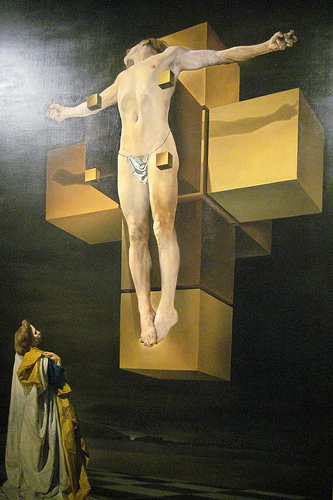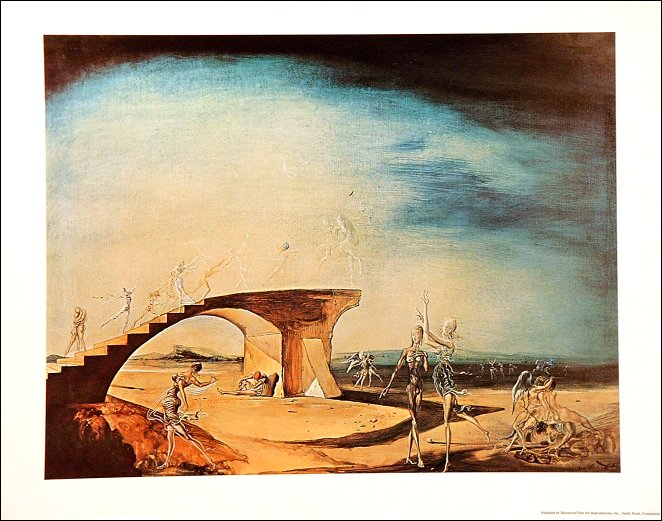Salvador Dali
Dalà once said “Le surréalisme, c’est moi” – a claim which has been borne out by his iconic identification in the public’s mind with the movement. Born in 1904 in Catalonia, Spain, Dali attended drawing school, and subsequently studied at the San Fernando School of Fine Arts in Madrid, where he experimented with Cubism and Dada at a time when few other Spanish painters were doing so. There began a lifelong friendship with poet Federico GarcÃa Lorca, as well as with filmmaker Luis Buñuel. In 1929 Dalà and Buñuel went on to create one of the defining early works of Surrealism in their short film Un Chien Andalou (An Andalusian Dog), which opened with the shocking image of an eye being sliced open, heralding the opening of the eyes of the viewer to the world of the subconscious. In the same year he met surrealist poet Paul Éluard’s wife Gala, who would become both his muse and later his wife. In 1931, Dalà painted a signature work of the surrealist movement, The Persistence of Memory, where melting pocket watches assailed the concept of a rigid framework of time. Dalà called his approach to creation the “Paranoiac-critical method,” which he defined as a “spontaneous method of irrational knowledge based on the critical and systematic objectivity of the associations and interpretations of delirious phenomena.” His explorations extended to his appearances at public events, where he would wear items as diverse as a glass case containing a bra, or a deep-sea diving suit. At the time of the Spanish Civil War, and unlike most artists and intellectuals, Dali was explicitly supportive of Francisco Franco’s regime, and remained in Catalonia after WWII. This earned him the political condemnation of many of his former fellow artists, although his popularity in the world at large remained largely unaffected. His creative and intellectual prowess also remained undaunted, and in his later work he combined a fascination with science and mathematics with Catholic mysticism. A signature work from this period is Crucifixion (Corpus Hypercubus), which features Christ crucified on a cross in the shape of a four-dimensional hypercube. This fusion of the artistic with the mathematical/scientific remained a key feature of his work right up to his very last painting, The Swallow’s Tail, inspired by René Thom’s mathematical work. Not content to confine himself to the world of the canvas, Dali also ventured into the worlds of fashion and jewelry. From 1960 onwards, the main focus of his work was the creation of the Dalà Theatre and Museum; he remained a public figure until his late years, when the death of his wife Gala plunged him into a period of depression and reclusion. Dali died in 1989, having produced over 1,500 paintings in his career.
Article via Ovation TV




